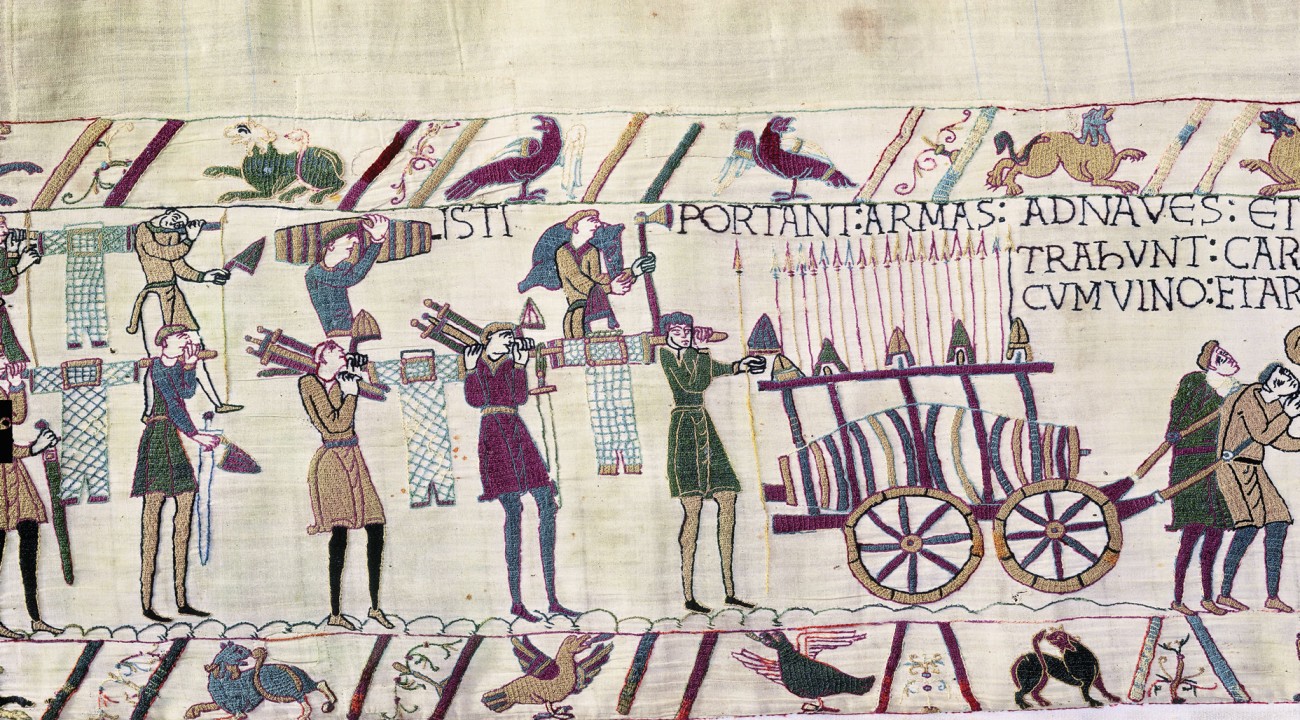
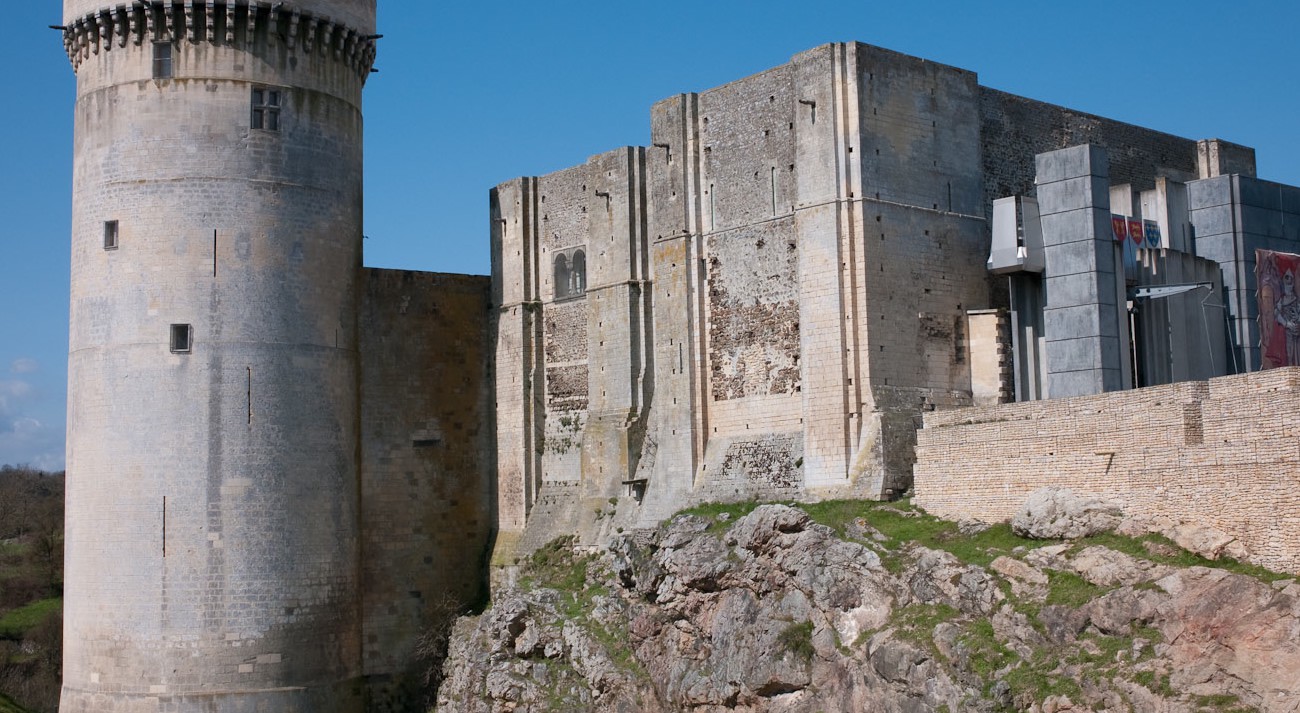
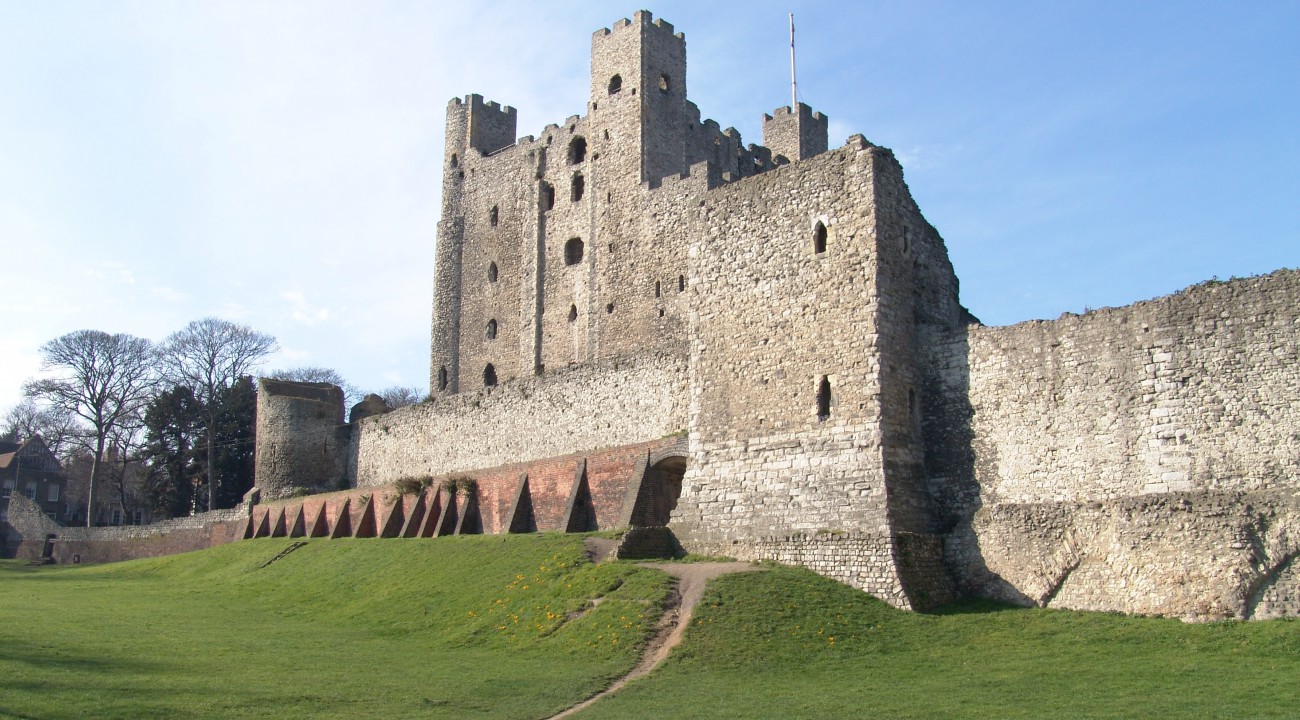
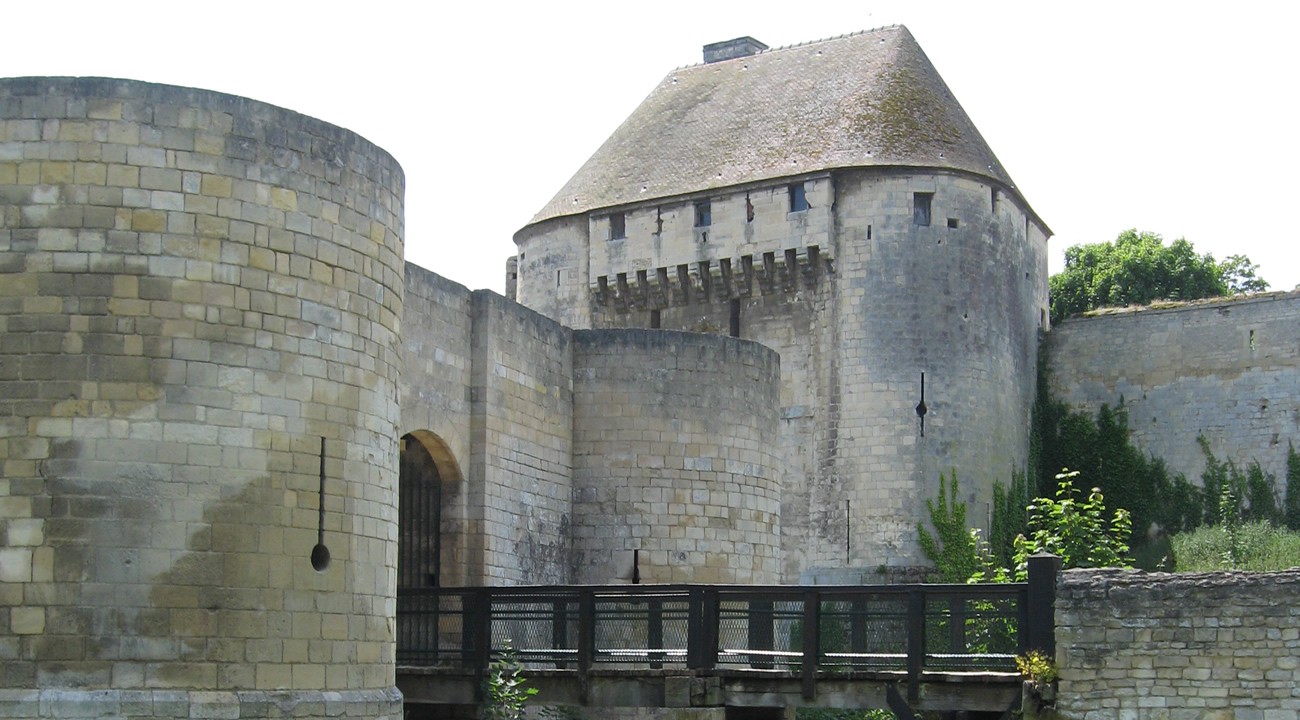
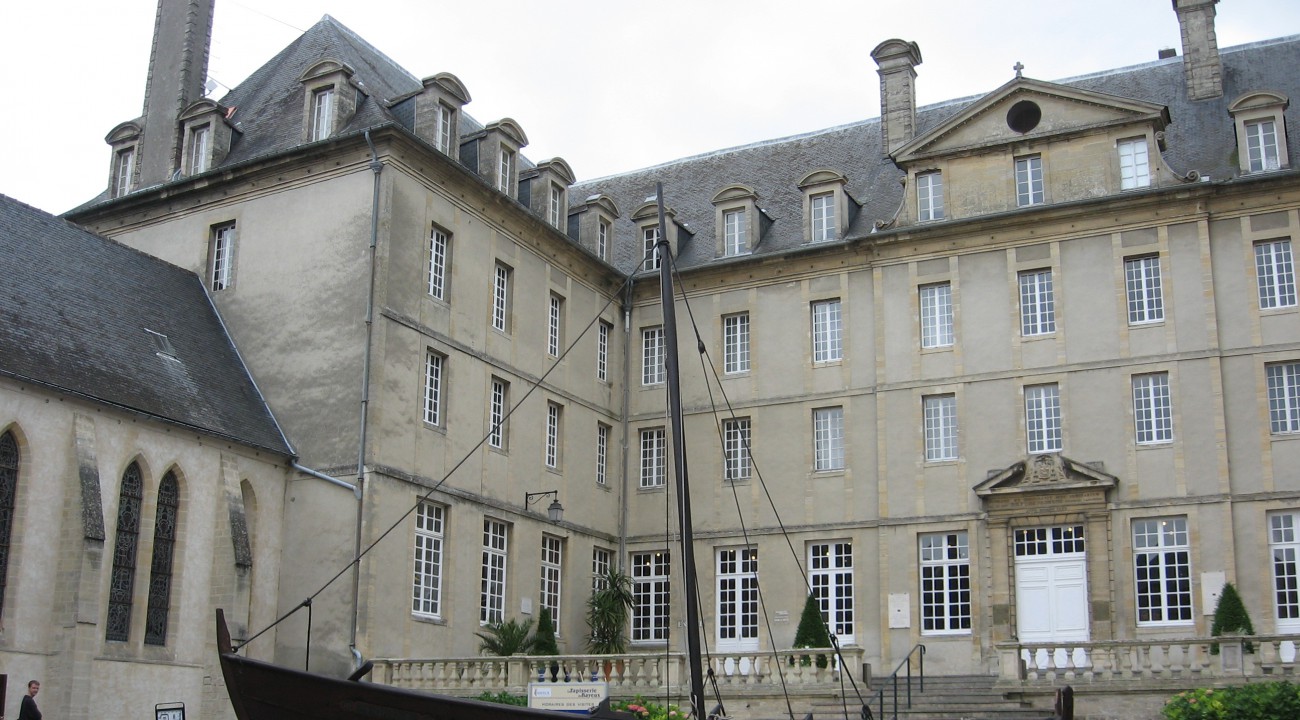
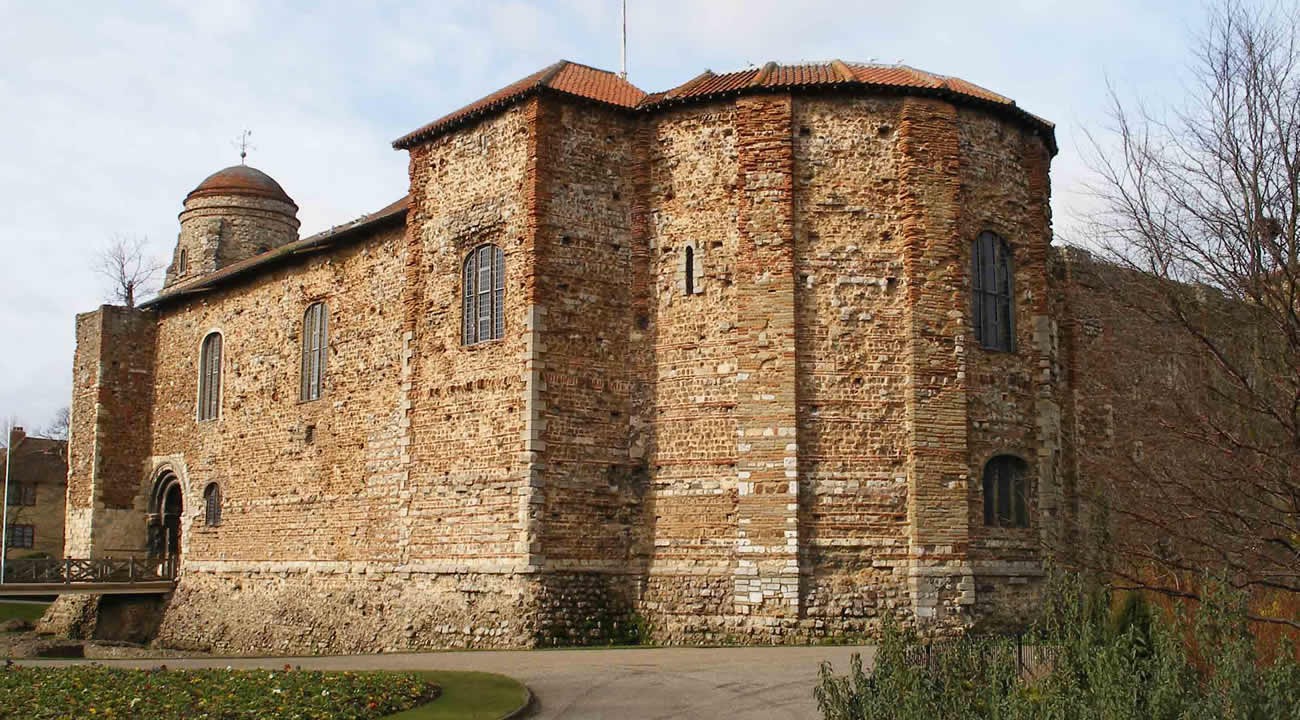
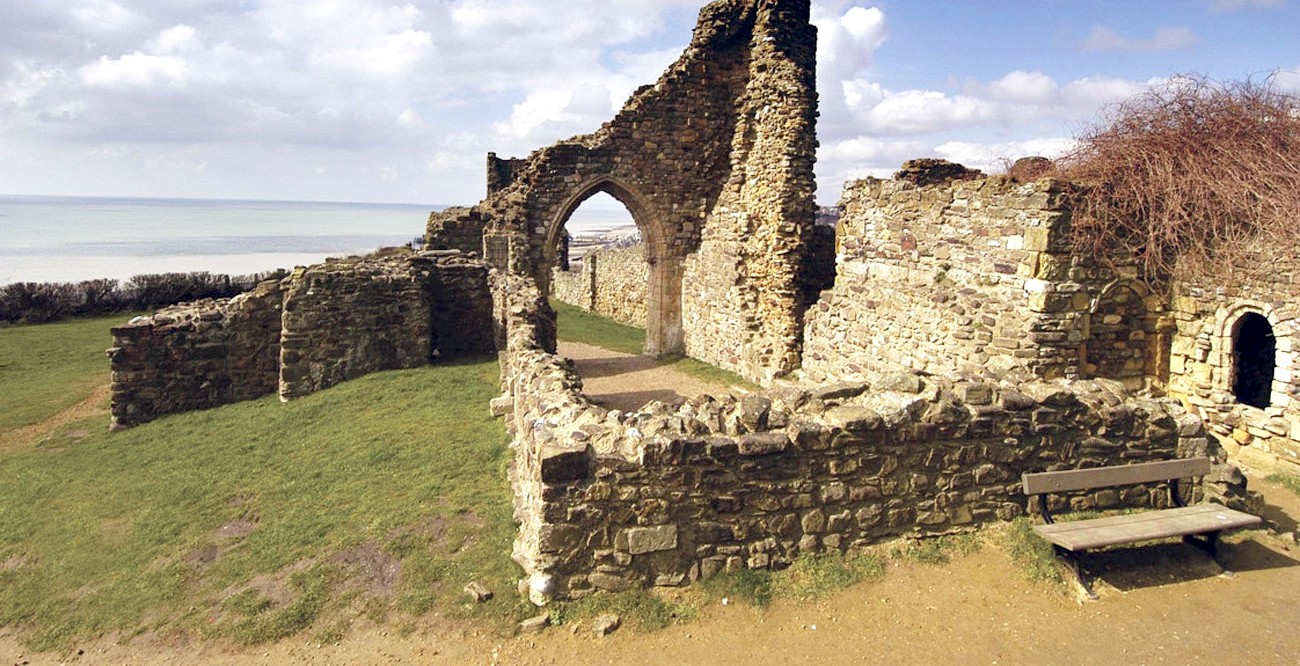
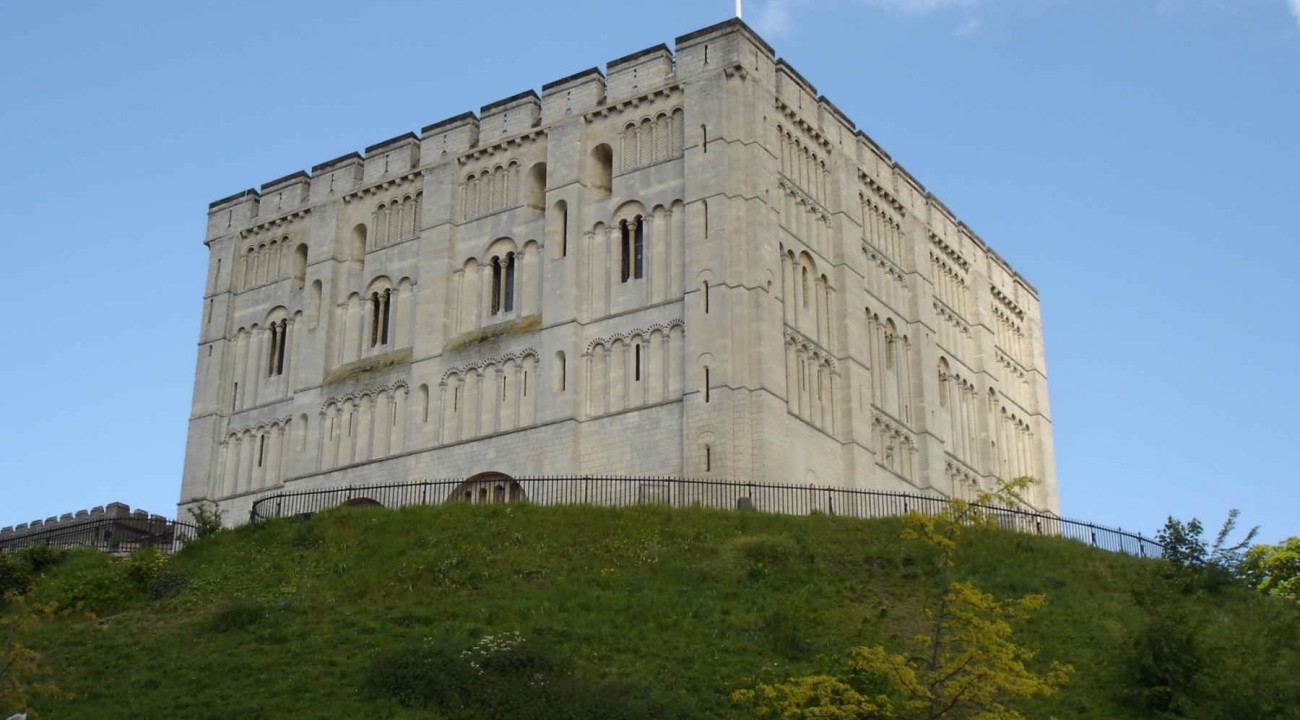
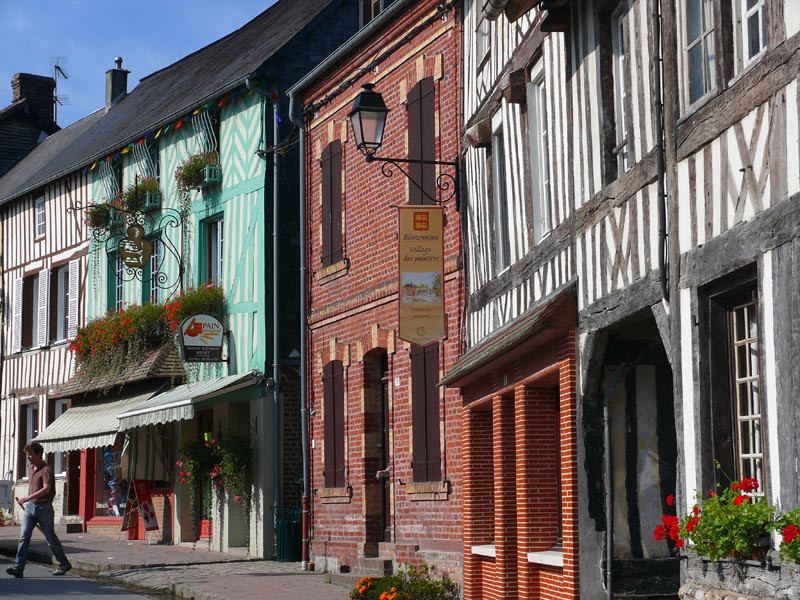
- Introduction
- Timeline
- Gallery
- Historical Background
- Site Plans
- 3D Reconstruction
A wooden castle was constructed on the site possibly as early as 1067, when William I made an expedition to East Anglia. By 1075 it was strong enough to withstand a siege during the revolt of the constable Ralph Guader. The stone keep was begun by William Rufus, perhaps as early as 1094. It was completed under Henry I, who visited over Christmas in 1121-22 for the Christmas crown-wearing ceremony, which possibly also functioned as the formal inauguration of the castle.
The stone keep measures 28 x 33m, 21.5m high and is the fifth largest in England. A large castle fee, plus an extensive New Borough to the west, was founded by Ralph Guader, which along with the cathedral precinct, practically eradicated the earlier Saxon town.
The stone keep was conceived as a massive show of power, combining architectural ostentation and modern innovation. It stood at the centre of an elaborate system of outer defences, which included the barbican, bailey and a series of outer ditches. The keep and nearby cathedral were conceived as a pairing and were constructed at the same time, as evidenced by shared masons’ marks. The foundation stone of the cathedral was laid in 1096 and it was completed by 1130.
In the 13th century the castle lost its importance as a military stronghold and its main function became that of the County Gaol, although it also remained a centre of administration for Norfolk. It continued in use as a prison for 600 years until 1887. The keep and prison buildings were then purchased by the city of Norwich and they were opened as the Castle Museum in 1894.
The European Union, investing in your future

 Fonds Européen De Développement Régional
Fonds Européen De Développement RégionalL’Union Européenne investit dans votre avenir
INTERREG IV A France (Channel) – England, co-funded by the ERDF.








 Email a friend
Email a friend  Print this page
Print this page 